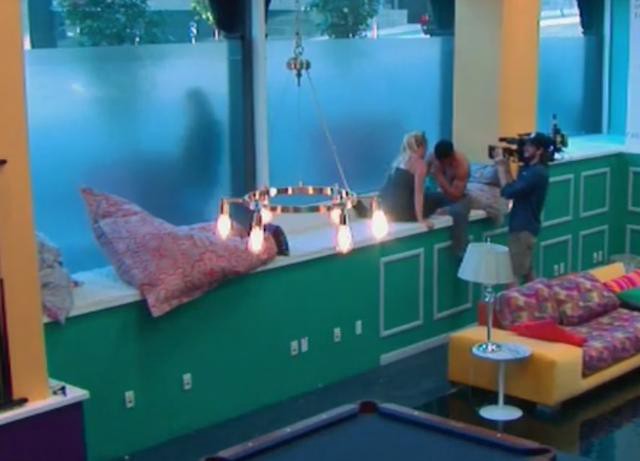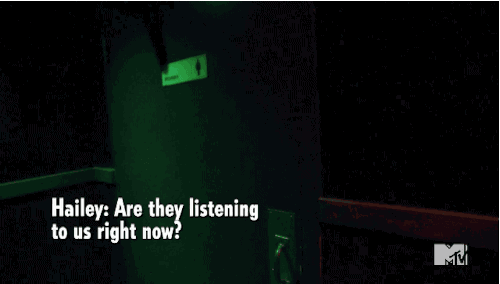The Quiet Revolution Of 'The Real World: EX-plosion'

Considering it’s humanity’s longest-running reality show, “The Real World” has been remarkably stagnant structurally. For 28 seasons over 22 years (!), “The Real World” was thus: several attractive people of varying degrees of interestingness between the ages of 18 and 26 are picked to live in a large house, outfitted by Ikea, in a city. This season, the 29th, which takes place in San Francisco, is different in two major ways. One of those is advertised, constantly: This season’s seven cast members are each recently out of long-term relationships, and halfway through the season, all of their ex-boyfriends and -girlfriends move into the house as well (the season is titled “The Real World: EX-plosion” rather than “The Real World: Back to San Francisco,” as would be expected). The second difference is not advertised, but is much more fun for those of us who took Cultural Studies classes in college and have said the word “metanarrative” with only the barest required amount of self-deprecation: “The Real World” has broken down the walls between cast and production.
The biggest structural changes of the entire series, prior to the current season, came in the Miami season, which was the first to require the cast work some kind of part-time job, and in the Brooklyn season, when the number of housemates moved from seven to eight. Not big changes! “Survivor” and “Fear Factor” and “The Amazing Race” and “Big Brother” and every other competitive reality show waited only a few seasons to institute gimmicks, and other “get strangers and put them in a house” shows flamed out early (“Jersey Shore,” for example). “The Real World” is as close to iconic as reality television gets; it seems almost disrespectful to mess around with the format. (That’s what “The Challenge” is for, anyway.)
So I saw “The Real World: EX-polosion” as the last desperate gasp of a venerable show, a show that for years had existed mainly as a means to find contestants for the much more successful “The Challenge” series, which pits cast members from all of the seasons against each other in a series of (these days, mostly muscly physical) challenges. And it might be the last; for some, it’s hard to watch this season, the second to be filmed in San Francisco, while remembering the first San Francisco season, the show’s third season overall and the season that really broke it into the mainstream. That was the season of Puck, the nose-picking, anarchic, bike-messenger street-rat, a San Francisco native. That was the season of Pedro, the HIV-positive lecturer and Cuban immigrant. (And some other people.) It was also very much about San Francisco; Puck could not survive anywhere else, for one thing. As much as reality TV can be important, the original San Francisco season of “The Real World” was important.
The new season? Not so much. It’s the usual array of hot 20-somethings, football players and models and such. The show could be filmed in Indianapolis or Ulaan Baatar for as much as we see of San Francisco; I lived in San Francisco and had no idea the anonymous bottle-service clubs the cast goes to even existed there. It is, in other words, a totally standard modern-era season of “The Real World,” except more so, because of the “let’s move all their exes in!” gimmick, which merely doubles the number of football players and models and cabs needed to transport them from their giant Ikea house to the anonymous clubs.
EXCEPT.

MTV, or Bunim-Murray Productions, or whatever, has decided to relax their stance on production appearing onscreen. In previous seasons, production would only appear in dire situations: when one cast member assaults another and needs to be kicked out of the house, for example, or, memorably, in the Seattle season, when one of the cast members had a tumultuous relationship with the casting director for the show. The casting director in question was even fired for that dalliance! If you saw a cameraman or a boom mic it was an accident; if you heard a producer’s voice, you knew something major was going to happen.
This season, production is all over the house. You see cameramen everywhere. You can hear producers ask the cast questions in the talking-head segments and tell the cast things they didn’t know themselves in order to stir up shit. After fights or hookups or whatever, the cast mentions that this would make great television. This has surely happened before, but it never aired; “The Real World,” by virtue of its early pedigree as an episodic documentary, always had a loftier sense of self than the content warranted. Now it’s down in the gutter, where it should be, messy and chaotic.
By showing us the artifice of the show, it is, oddly, the most real season of “The Real World” since the first. Reality and documentation have permeated our culture to the point where we very much do not need the artifice to be kept from us in order to trick us into thinking the scenarios depicted are real. Reality is having a camera and a mic pointed at your face, whether it’s on loan from Viacom’s production warehouse or an iPhone.

This is all a more subtle change than doubling the number of roommates, but it’s subtle by a small order of degree; it reads like an extension of the final scene of the least-real-seeming reality show ever, “The Hills,” in which it was revealed that the final shot of the series was filmed on a Hollywood set. I like to think that was a smart nod to the viewers who now understand that reality both is and isn’t real, and that the real question isn’t “how much of this is real” but “what even is ‘real’?” It could also be that the producers are just getting lazy because who cares about “The Real World” in 2014; although the episode where the exes all moved in was the highest-rated episode of “The Real World” in years, the show hasn’t been impressive on a ratings front for a decade.
Still, it’s certainly a more interesting glimpse at the future of the series, if there is one, than this year’s gimmick, which I can’t imagine will return next season. Several members of this year’s cast were born after the original New York season of “The Real World” aired in 1992; they’ve been shaped by the tropes and characters of the show, even if only in the way they present themselves when they fulfill their birthrights as Americans and get on a TV show of their own. And finally they can air all that out publicly, and let the cascade of cameras, microphones, documentation for all time, truth, fiction, fiction based on truth, truth based on fiction, and all of that based on television, come pumping from of our TVs along with a lot of dubstep and neon. It’s worth watching if only for that.
